#Fiorello LaGuardia
Text

Future Mayor Fiorello La Guardia really said, "I dare you to arrest me." A fervent opponent of Prohibition, La Guardia, then a congressman, staged a beer-making demonstration for reporters in 1926 in order to defy the law. He, along with Governor Al Smith, emphasized how Prohibition unfairly targeted working-class New Yorkers and distracted officials from other pressing issues.
Photo: MCNY Instagram
#vintage New York#1920s#Fiorello LaGuardia#Prohibition#anti-Prohibition#making beer#Al Smith#vintage NYC#dare
90 notes
·
View notes
Text
Is antitrust anti-labor?
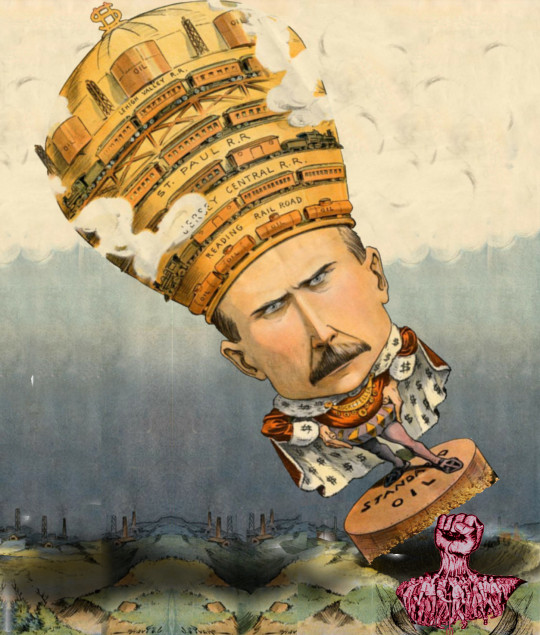
If you find the word “antitrust” has a dusty, old-fashioned feel, that’s only to be expected — after all, the word has its origins in the late 19th century, when the first billionaire was created: John D Rockefeller, who formed a “trust” with his oil industry competitors, through which they all agreed to stop competing with one another so they could concentrate on extracting more from their workers and their customers.
If you’d like an essay-formatted version of this post to read or share, here’s a link to it on pluralistic.net, my surveillance-free, ad-free, tracker-free blog:
https://pluralistic.net/2023/04/14/aiming-at-dollars/#not-men
Trusts were an incredibly successful business structure. A bunch of competing companies would be sold to a new holding company (“the trust”), and the owners of those old standalone companies would get stock in this new trust. The trust would operate as a single entity, hiking prices and suppressing wages. If anyone tried fight the trust with a new, independent company, the trust could freeze them out, by selling goods below cost, or by doing exclusive deals with key suppliers and customers, or both. Once a trust sewed up an industry, no one could compete. The trust barons were rulers for life.
The first successful trust was Rockefeller’s Standard Oil, which amassed a 90% share of all US oil. Other “capitalists” got in on the game, forming the Cotton Seed Oil Trust (75% market share), the Sugar Trust (85%). Then came the Whiskey Trust and the Beef Trust. America was becoming a planned economy, run by a handful of unelected “industrialists” with lifetime appointments and the power to choose their successors.
A century after overthrowing the King, America had new kings: “kings over the production, transportation and sale of the necessities of life”. That’s how Senator John Sherman described the situation in 1890, when he was campaigning for the passage of the Sherman Act, the first “anti-trust” act. The Sherman Act wasn’t the first time American lawmakers tried to protect competition, but it was the first law passed after the failure of competition law led to the hijacking of the nation by people Sherman called the “autocrats of trade.”
https://marker.medium.com/we-should-not-endure-a-king-dfef34628153
The Sherman Act — and its successors, like the Clayton Act, are landmark laws in that they explicitly seek to protect workers and customers from corporate power. Antitrust is about making sure that no corporation gets so powerful that it’s too big to fail, nor too big to jail — that a company can’t get so big that it subverts the political process, capturing its own regulators:
https://doctorow.medium.com/small-government-fd5870a9462e
If American workers are derided as “temporarily embarrassed millionaires” who won’t join the fight against the rich because they assume they’ll soon join their ranks, then the American rich are “temporarily embarrassed aristocrats” who would welcome hereditary rule, provided they got to found one of the noble families. The goal of the American elite has always been to create a vast and durable dynasty, wealth so vast and well-insulated that even the most Habsburg-jawed failson can’t piss it away.
The American elite has always hated antitrust. In the 1980s, Ronald Reagan, abetted by Robert Bork and his co-conspirators at the Chicago School of Economics gutted antitrust through something called the “consumer welfare standard,” which ended anti-monopoly enforcement except in instances where price hikes could be directly and unarguably attributed to market power, which is, basically, never.
It’s been 40 years since Reagan took antitrust out behind the Lincoln Monument and shot it in the guts, and America has turned into the kind of aristocratic kleptocracy that Sherman railed against, where “great families” control the nation’s wealth and politics and even its Supreme Court judges:
https://pluralistic.net/2023/04/06/clarence-thomas/#harlan-crow
Anything that can’t go on forever will eventually stop. Monopoly threatens the living standards, health, freedom and prosperity of nearly every person in America. The undeniable enshittification of the country by its guillotine-ready finance ghouls, tech bros and pharma profiteers has led to a resurgence in antitrust, and a complete renewal of the @FTC and @JusticeATR:
https://www.eff.org/deeplinks/2021/08/party-its-1979-og-antitrust-back-baby
Key to the new and vibrant FTC is Commissioner Alvaro Bedoya, who, along with Commissioner Rebecca SlaughterFTC and Chairwoman Lina Khan, is part of the Democratic majority on the Commission. Bedoya has a background in tech and privacy and civil rights, and is a longtime advocate against predatory finance. He’s also a law professor and a sprightly scholarly writer.
Earlier this week, Bedoya gave a prepared speech for the Utah Project on Antitrust and Consumer Protection conference, entitled “Aiming at Dollars, Not Men.” It’s a banger:
https://www.ftc.gov/system/files/ftc_gov/pdf/bedoya-aiming-dollars-not-men.pdf
Criticisms of the new antitrust don’t just come from America’s oligarchs — the labor movement is skeptical of antitrust as well, and with good cause. Antitrust law prohibits collusion among businesses to raise prices, and at many junctures since the passage of the Sherman Act, judges have willfully perverted antitrust to punish labor organizers, treating workers demanding better working conditions as if they were Rockefeller and his cronies conspiring to raise prices.
This is the subject of Bedoya’s speech, whose transcript is painstakingly footnoted, and whose text makes it crystal clear that this is not what antitrust is for, and we should not tolerate its perversion in service to crushing worker power. The title comes from a 1914 remark by Democratic Congressman Thomas Konop, who said, of antitrust: “We are aiming at the gigantic trusts and combinations of capital and not at
associations of men for the betterment of their condition. We are aiming at the dollars and not at men.”
Konop was arguing for the passage of the Clayton Act, a successor to the Sherman Act, which was passed in part because judges refused to enforce the Sherman Act according to its plain language and its legislative intent, and kept using it against workers. In 1892, two years after the Sherman Act’s passage, it was used to crush the New Orleans General Strike, an interracial uprising against labor exploitation from longshoremen to printers to carpenters to hearse drivers.
Bosses went to a federal judge asking for an injunction against the strike. Though the judge admitted that the Sherman Act was designed to fight “the evils of massed capital,” he still issued the injunction.
The Sherman Act was used to clobber the Pullman Porters union, which organized Black workers who served on the Pullman cars on America’s railroads. The workers struck in 1894, after a 25% wage-cut, and they complained that they could no longer afford to eat and feed their families, so George Pullman fired them all. The workers struck, led by Eugene Debs. Pullman argued that the strike violated the Sherman Act. The Supreme Court voted 9:0 for Pullman, ordered the strike called off, and put Debs in prison.
In 1902, mercury-sickened hatters in Danbury, CT demanded better working conditions — after just a few years on the job, hatters would be disabled for life with mercury poisoning, with such bad tremors they couldn’t even feed themselves. 250 hatters at the DE Loewe company tried to unionize. Loewe sued them under the Sherman Act, and went to the Supreme Court, who awarded Loewe $6.8m in today’s money, which allowed Loewe to seize his former workers’ homes.
This is what sent Congress back to the drawing board to pass the Clayton Act. Though the Sherman Act was clear that it was about trustbusting, the courts kept interpreting it as a charter for union-busting. The Clayton Act explicitly permits workers to form unions, call for boycotts, and to organize sympathy strikes.
They made all this abundantly clear: writing in language so plain that judges had to understand the legislative intent. And yet…judges still managed to misread the Clayton Act, using it to block 2,100 strikes in the 1920s. It appears that passing the Clayton Act did not save a single strike that would have been killed by the bad (and bad faith) Sherman Act precedents that led to the Clayton Act in the first place.
The extent to which greedy bosses used the Clayton Act to attack their workers is genuinely ghastly. Bedoya describes one coal strike, against the Red Jacket Coal Company of Mingo, WV. The mine’s profits had grown by 600%, but workers’ wages weren’t keeping up with inflation. The miners sought a raise of $0.10 on the $0.66 they got paid for ever carload of coal they mined. The company didn’t even pay the workers with real money — just “company scrip”: coupons that could only be spent at the company store. Red Jacket gave its workers a $0.09/car raise — and raised prices at the company store by $0.25/item.
The workers struck, Red Jacket sued. The Fourth Circuit refused to apply the Clayton Act, following a precedent from a case called Duplex Printing that held that the Clayton Act only applied to people who stood “in the proximate relation of employer and employee.”
Congress was pissed. They passed the Norris-LaGuardia Act of 1932, with LaGuardia spitting about judges who “willfully disobeyed the law…emasculating it, taking out the meaning intended by Congress, making the law absolutely destructive of Congress’s intent.” Norris-LaGuardia creates an antitrust exemption for labor that applies “regardless of whether the disputants stand in the proximate relation of employer and employee.” So, basically: “CONGRESS TO JUDGES, GET BENT.”
And yet, judges still found ways to use antitrust as a cudgel to beat up workers. In Columbia River Packers, the court held that fishermen weren’t protected by the exemption for workers, because they were selling “commodities” (e.g. fish) not their labor. Presumably, the fish just leapt into the boats without anyone doing any work.
The willingness of enforcers to misread antitrust continued down through the ages. In 1999, the FTC destroyed the hopes of the some of the country’s most abused workers: “independent” port truckers, who worked 80 hours/week and still couldn’t pay the bills. Truckers were only paid to move trailers around the ports, but they were required to do hours and hours of unpaid work — loading containers, hauling equipment for repair, all for free. The truckers tried to organize a union — and the FTC subpoenaed the organizers for an investigation of price-fixing.
But the problem wasn’t with the laws. It was with judges who set precedents that — as LaGuardia said, “willfully disobeyed the law…emasculating it, taking out the meaning intended by Congress, making the law absolutely destructive of Congress’s intent.”
Congress passed laws to strengthen workers and judges — temporarily embarrassed aristocrats — simply acted as if the law was intended to smash workers. But by 2016, judges had it figured out. That’s when jockeys at the Camarero racetrack in Canóvana, Puerto Rico went on strike, demanding pay parity with their mainland peers — Puerto Rican jockeys got $20 to risk their lives riding, a fifth of what riders on the mainland received.
Predictably, the horse owners and racetrack sued. The jockeys lost in the lower court, and the court ordered the jockeys to pay the owners and the track a million dollars. They even sued the jockeys’ spouses, so that they could go after their paychecks to get that million bucks.
The case went to the First Circuit appeals court and Judge Sandra Lynch said: you know what, it doesn’t matter if the jockeys are employers or contractors. It doesn’t matter if they sell a commodity or their labor. The jockeys have the right to strike, period. That’s what the Clayton Act says. She overturned the lower court and threw out the fines.
As Bedoya says, antitrust is “law written to rein in the oil trust, the sugar trust, the beef trust…the gigantic trusts and combinations of capital…dollars and not at men.” Congress made that plain, “not once, not twice, but three times, each time in a louder and clearer
voice.”
Bedoya, part of the FTC’s Democratic majority, finishes: “Congress has made it clear that worker organizing and collective bargaining are not violations of the antitrust laws. When I vote, when I consider investigations and policy matters, that history will guide me.”
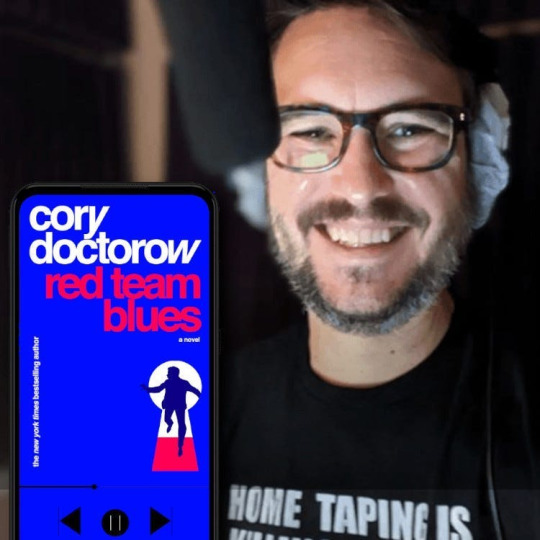
There's only three days left in the Kickstarter campaign for the audiobook of my next novel, a post-cyberpunk anti-finance finance thriller about Silicon Valley scams called Red Team Blues. Amazon's Audible refuses to carry my audiobooks because they're DRM free, but crowdfunding makes them possible.
#pluralistic#jockeys#antitrust#labor#history#judicial overreach#Alvaro Bedoya#consumer welfare standard#trustbusting#sherman act#new orleans general strike of 1892#pullman union#pullman porters#eugene debs#mad hatters#danbury hatters#clayton act#red jacket coal company#Fiorello LaGuardia#Norris-LaGuardia Act#duplex printing#Columbia River Packers#puerto rico#Camarero racetrack
219 notes
·
View notes
Note
Who do you consider to have been some of the most important / formative mayors of New York?
This is a great question, and actually rather difficult to answer, because for the longest time both Tammany Hall and the Whig/Republican machine tended to prefer mayors who were dull but reliable non-entities. Starting in 1824, NYC was divided into wards that elected Aldermen and Assistant Aldermen to the Board of Aldermen and the Board of Assistants, who together made up the bicameral Common Council. This led to a system whereby the real political action was shunted to the local level, where the ward's Aldermen and the ward boss (and his precinct bosses) ran the show.

The downfall of Boss Tweed led to some reforms, with the bicameral Common Council replaced by a unicameral Board of Aldermen who were elected from larger State Senate districts or at-large, as part of the Whig Party's drive to dilute the power of Tammany's Irish Catholic voting base. This would change somewhat when the five boroughs were consolidated into Greater New York in 1898, which added the borough presidents and the Board of Estimate into the mix, and then again in 1901 and so forth.
However, the overall trend was a weak mayor system where real political power was fairly evenly distributed between aldermen (who were not only the city's legislatures but were also represented on the Board of Estimate through their President), the borough presidents, the mayor, and the comptroller.
So the major players in NYC politics tended not to be mayors:

Dewitt Clinton was incredibly transformational, but despite serving three terms as mayor his real mark on New York was as governor where he was the driving force behind the construction of the Erie Canal.
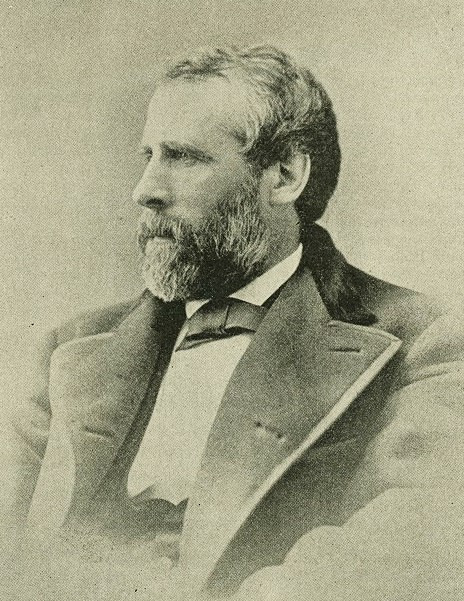
Andrew Haswell Green, the "Father of Greater New York," was responsible for the creation of Central Park, the New York Public Library, the Bronx Zoo, The Museum of Natural History, the Metropolitan Museum of Art, Riverside, Morningside, and Fort Washington Parks, Columbus Circle, and the consolidation of Greater New York - but he never served as mayor. The original Robert Moses, Green's political power came from his leadership of the Central Park Commission, the Greater New York Commission, a six-year stint in the Comptroller's office, and his position on a number of NGOs.
But if we're talking transformative mayors, there is one name that rises above all the rest: Fiorello goddamn LaGuardia.

There had been other reform mayors before him - Seth Low had established the Civil Service, John P. Mitchel brought scientific management to city government - but none of them had ever been able to get re-elected. Unlike the wealthy WASP reformers, LaGuardia knew how to beat Tammany at the ethnic politics game. Tammany's strength had always been in the Irish wards of the city, and while they had tried to divide-and-rule by promoting the naturalization of Russian and Polish Jews in return for them voting for Irish-American politicians in the Lower East Side while noticably neglecting the naturalization of Italians, the emergence of second-generation Jewish and Italian voters meant that this strategy had run its course.
Born to a Sephardic mother from Trieste and a lapsed Catholic father from southern Italy, Fiorello had an astonishing knack for transcending ethnic political boundaries in New York City - he spoke Italian, German, Yiddish, and Croatian, but he was also a progressive Republican and Episcopalian (which meant he could speak middle-class WASP too). LaGuardia won the 1933 mayoral election by bringing together a Fusion coalition that brought middle class German-American Republicans together with Italians and Jews, a coalition that he would expand in 1936 by bringing socialists, unions, and black voters together into the American Labor Party.
Over his twelve years as Mayor, LaGuardia was almost pathologically active (in a way that's oddly reminiscent of Henry II), transforming almost every aspect of New York City:
Jobs for the Unemployed:
LaGuardia's immediate mission as mayor was to fight the Great Depression that had had left a third of the City unemployed. He did this by forming an enduring alliance with FDR in which the New Deal would provide NYC with unpredecented level of federal support in exchange for NYC becoming the New Deal's model city - the first of the "Little New Deals." In his first hundred days in office, LaGuardia convinced FDR to give New York City a full 20% of the Civil Works Administration's work relief budget. This put 200,000 New Yorkers back to work - and this would only be the beginning of New York City's experiments with direct job creation.
As part of Fiorello LaGuardia's "Little New Deal," LaGuardia's new Parks Department employed 70,000 workers - paid for by CWA and later WPA money - to rebuild New York City's parks, constructing the Central Park Zoo and 60 playgrounds in the first year.
When the New Deal created the Works Progress Administration in 1935, LaGuardia once again lobbied FDR to put NYC first in line. This culminated in some 700,000 New Yorkers - a tenth of the city's entire population - getting jobs through the WPA and other New Deal programs. Together with the Parks Department, LaGuardia and Robert Moses would mobilize this workforce to completely transform the city.
Public Works:
This is where we have to discuss Fiorello LaGuardia's fateful decision to make Robert Moses his master builder. While Moses was in the process of becoming the "Power Broker" before LaGuardia - he had already been made president of the Long Island State Park Commission and chairman of the New York State Council of Parks - LaGuardia enabled his ascent to the heights of power by making him Parks Commissioner, Commissioner and then Chairman of the Triborough Bridge Authority, Commissioner of the NYC Planning Commission, and Chairman of the Emergency Public Works Commission.
The pact between them was simple: LaGuardia would give Moses the public appointments he needed to consolidate public works across the city and would steer New Deal public works money through Moses' agencies, and in exchange Moses would be LaGuardia's master builder with a mandate to "build it quickly and build it well." This was not an easy task, because Robert Moses was a political enemy of FDR and FDR tried to bar him from being given any WPA or PWA funding, but the mayor was able to persuade Roosevelt that it was more important that LaGuardia's proposed $1 billion public works program for NYC be carried at speed and administered efficiently.
As LaGuardia's workhorse, Moses would oversee almost all of NYC's public works, including the West Side Highway, the future FDR Drive, the Brooklyn Battery Tunnel, the Triborough Bridge, the LaGuardia and future JFK Airports, and Jones Beach Park, among others. LaGuardia would also construct the Sixth Avenue Subway line, the Queens-Midtown Tunnel and the Lincoln Tunnel without Moses (who was completely uninterested in mass transit and who always preferred bridges to tunnels).
In addition to these major projects, LaGuardia with and without Moses built the city's first municipal power plants, 37 sewage treatment plants, 9 fire houses, 142 elementary schools and 22 high schools, half of NYC's then-23 municipal hospitals, eight District Health Centers to provide preventative, specialized, and public health immunization care, and the first 14 of the City's public housing projects.
City Government:
To dismantle Tammany's patronage system, he began to massively expand the civil service to eliminate patronage jobs, and then when Tammany beat him on a government reform bill in 1934, he simply kept pushing. He pushed through the LaGuardia Reform Charter of 1938 that abolished the Tammany-dominated Board of Aldermen and replaced it with a City Council elected by Single Transferrable Vote, established the Board of Estimate as a central administrative body with powers over the city budget, public contracts, franchises, and land use - crippling Tammany's ability to raise money through graft and kickbacks.
To transform New York City into a "strong mayor" model, he undertook a campaign of transforming independent agencies scattered across the five boroughs into a system of unified citywide departments or public authorities that answered directly to the mayor and gave him unprecedented state capacity. In 1934, he formed the Parks Department and the New York City Housing Authority; in 1936 he formed the Department of Buildings and the City Planning Commission; in 1938, he restructured the Department of Welfare to run the city's social welfare programs and a massively expanded public hospital system; in 1940, he took over the IRT (operating the 1, 2, 3, 4, 5, 6), and the BMT and IND (operating the A, B, C, D, E, F, G, J, L, M, N, Q, R, W, and Z lines), unifying the NYC subway system for the first time.
To deal with police corruption, LaGuardia appointed Lewis Valentine to purge the NYPD so that the mayor could use it (and Thomas Dewey) in a crusade against the mafia's gambling, racketeering, and vice operations. This marked a rare period of honesty and effectiveness in the NYPD, although after WWII the system of protection rackets and mafia corruption would eventually re-establish itself.
Ironically, this exhaustive list of accomplishments really made it hard for later mayors to distinguish themselves, because mostly their task was completing, managing, or mis-managing the system that LaGuardia had built. After LaGuardia I would say that Robert Wagner Jr. (established public sector collective bargaining, created CUNY, Lincoln Center, Shakespeare in the Park, and dealt the killing blow to Tammany) and John Lindsay (see my previous post, but chiefly scatter-site housing, the civilian complaint review board, and the Knapp Commission on police corruption) are on my list of formative mayors.
After them, there have been long-serving mayors and good mayors, but unfortunately not the two combined.
#history#historical analysis#nyc history#nyc mayor#fiorello laguardia#tammany hall#urban history#urban studies#urban politics#political machines#new deal#robert moses#infrastructure
28 notes
·
View notes
Text

youtube
Meet Trevor Brown
[Video review of an interview I did back in ninety ninety-four]
What can I say about this particular video? I do have mixed feelings about it. It was shot sometime between '94 and '95 when I was living in my first apartment in Williamsburg Brooklyn. I have to admit I haven't even pressed play yet, because as much as I enjoy seeing images of my first adult abode my behavior feels a bit cringe. This was a time I felt a need to perform and not just be, my energy was very restless and exasperating.
I can recall that I think a young woman wanted to shoot me for a class project or something, I must have met her through one of my friends at the time. Beyond that I can't really recollect any other context of why I was being interviewed. My personal belief is you never turn down an opportunity to be in front of a camera or in print.
Still haven't started the video, I am totally delaying. Suspending the feelings I know I will have when I start the tape. #😬 Lets comment on the screenshot and what I can see. To the left is my music collection, I can see a lot of cassette tapes which means this has to be sometimes after '93 because I inherited my father's jazz collection on tape and vinyl.
Above the cassettes I can see my collection of CDs that only had another four years of existence before being burned up in the fire in my next and current apartment in '98. On the right I can see the Madonna poster I bought in college that followed me to Brooklyn. Below it looks like one of the Camel cigarette posters from the subway which I was notorious for taking before the MTA changed how they displayed the posters.
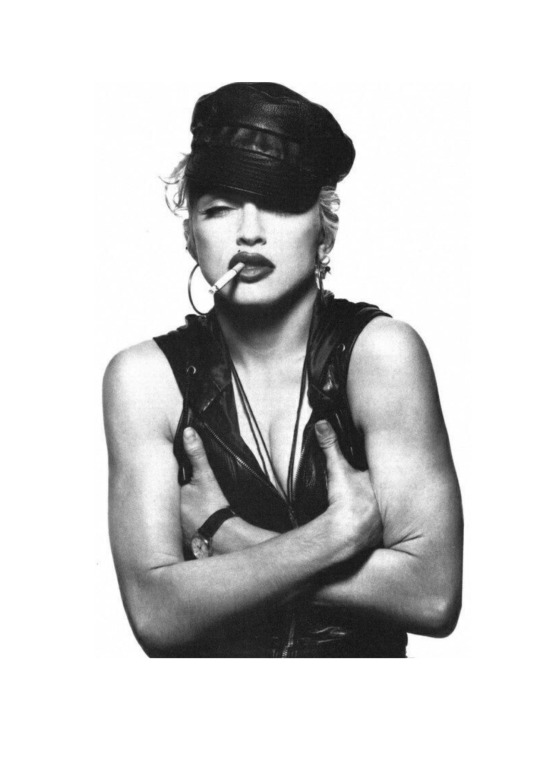
I am wearing a red kerchief, a grey sweatshirt that may say Ithaca College (okay it doesn't, I did say 'may') on it and overalls? I have to say not the most glamorous of looks, but comfortable. And it seems I am crocheting, more than likely a scarf, because those were the easiest and quickest things to knit.
Finally let's press play. Now I am being playful and coy, avoiding the question and not telling my age, which I still don't do. I am young and beautiful albeit I am sure I didn't feel beautiful at the time.
It was a curious choice the director/editor of this film chose a graffiti type as the title card. Nothing about me is urban, hood or street. And albeit this time in the nineties is the sweet spot of hip hop I am not and nor have ever been highly influenced in my personal style by rap music. I wouldn't say the choice is offensive, but not well thought out. Just because I am Black doesn't automatically mean that I should be represented by street culture.
'My mama's womb', has been my response to where I am from for decades, its a way to defuse the obvious questions of heritage. Even at this time my presentation of Blackness was confounding for the whytes. I am not saying that this director had that particular position, but asking a Black person where they are from especially if this conversation is happening in America is a very loaded question and may bring up all kind of baggage and unresolved feelings. #ijs
That laugh, still kills me. #🤣 She clearly didn't like my deflecting humor and asked a follow up about where I was from, which I didn't feel was relevant so didn't answer. This was the thing about me, folks would underestimate me in interviews like I didn't have my own agenda no matter how candy-coated I appeared.
Maybe this is what she was curious about the young gay Black man. Let's see how this progresses. I drop my voice a few octaves as I talk about being gay in a very humorous way but also acknowledging that I am also Black, less we forget. I can tell you this definitively I was being interviewed by a straight cis whyte woman.
Then we cut to a wider shot with a clear costume change, I am now rocking that ratty shake and go wig with two red ties forming very dry pig tails. #SuchACheapWig A red and white horizontally stripped shirt, this meshy black dress and an artificial sun flower in my hands.
We can now see the red and purple theme I had for this room especially with my purple IKEA curtains. To my left my fathers old stereo which also perished in the fire in '98. In addition to all the music on the walls I notice that just like my current apartment there isn't much bare wall space albeit now, its not found objects but actual framed artwork. I have covered up just about every piece of white space with something colorful. I think we are about to get a show.
Wow there's a voice-over going on that is really low and hard to hear, I am going to see if jacking into my stereo pushes up the volume. I seem to be talking a bit more about being gay in the nineties. This was clearly a technical difficulty, she didn't get good audio and still decided to use it.
In the background I can see Poopsie my late cat on the window sill, she would be with me two more years before my aunt forced me to reduce the number of cats she would care for in my absence as I traveled Europe for work on a tour. Poopsie would be left in a field near residential houses right outside of Co-op city. I would be devastated for months having to part with one of my two cats this way.
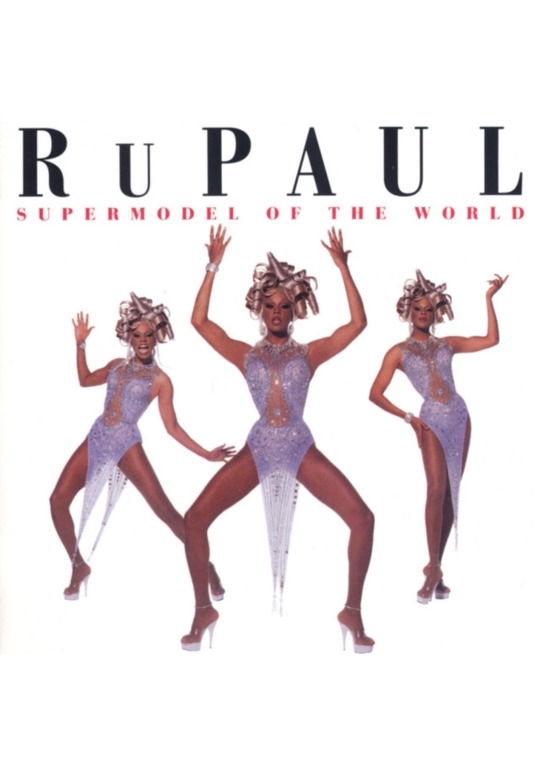
Then there is an abrupt cut to RuPaul's classic "You Bettah Work (Supermodel of the World)", back when I still really adored Ru before she became too problematic for me to continue to mess with. I can see I didn't try to do any huge make-up but I do have on some red lipstick, the least I could do for this fast-drag look.
Cut-to the dry shake and go blonde wig and me in the hallway of my apartment, our interview has turned into a video shoot! I have on the same dress but now a short cut military jacket, that I was just dreaming about last night. There's the old beaded curtain behind me that is represented in my new apartment by a smaller version from the beads that survived the fire.
Back to the bedroom, the sweatshirt says 'Tompkins Cortland', I have no idea what that is. I have stuffed both my cats beneath this large sweatshirt and they are struggling to get out. The cats are even funny to the director, when I joke this is what happens when you don't wear a bra. Hmmm is that misogynistic, I don't think so. I think its common knowledge that if you don't bind your breast they may start to sag especially after having kids. I am open to the fact check here. I will admit that I have never had titties and don't know the true way of breast!
Anastasia who was the cat that was with me the longest peeks her face out of my sweatshirt being coaxed out with the string I dangling in front of her. Clearly the director likes this moment because we are on this scene for over a minute. Ana has been dead I think over a decade, I miss her. I had her for about fifteen years quite old for a cat, she was very affectionate and attentive.
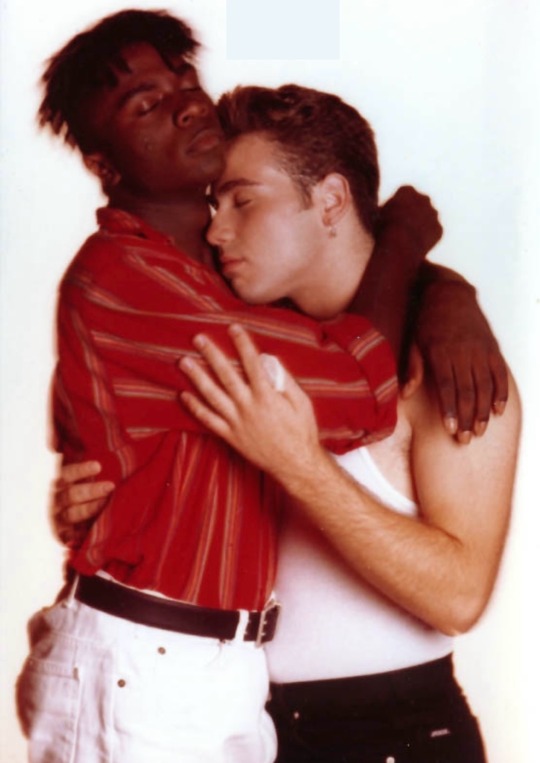
There is a framed portrait of my late friend Tim Fischetti and me, I can see in the background as I search for the GMHC Young, Hot & Safe poster that me and him both helped to develop and starred in. Curiously its also purple like the theme of my room. Then the director shifts to the controversy around the campaign and the posters. I think the New York Post had something derogative to say about it. I mean this was the mid-nineties we weren't where we are with gay rights as we are now. Albeit it feels like sometimes we're moving backwards.
She asked me a question about how I feel about the poster and at first I deflect with humor than come back to an answer that was in line with my HIV/AIDS educator background at the time. We then do another cut and I have changed the scarf on my head to a more mammy-like tying straight out of Gone With the Wind. I do a brief mammy skit obviously the conversation had turned to Aunt Jemima or the representation of Black folks in media or I had directed it there wanting to educate this young whyte female.
I also got a glimpse of the cock-ring Ken doll I had back in the day. I can't say I knew what happened to him. Then I perform the Paul Laurence-Dunbar poem In the Morning. Which I had first learned in church while performing it with my Aunt Mary. I also at the last minute decided to switch my monologue for my audition at Performing Arts (née LaGuardia) to the Laurence-Dunbar poem which I think cemented my spot at the specialized high school.

As I perform the poem I can hear that I have some Björk playing in the background. I love my somewhat eclectic taste in music and for me these add elements to who I am because these were my choices not the directors and in that way they say something specific about me. She likes the poem, she stays on it with me for a minute, with I have to say some mediocre camera work on the zooms and close-ups.
Then there is a pause and we get outtakes or unused footage in the final piece or maybe that was just a really bad transition. I am not sure I even knew these were here. There's a David Dinkin pride poster on the wall behind me. Go on Mayor Dinkins! Oh this looks like the full RuPaul video! Well my version of the video...
This is so trashy I love it! We now cut to a close up of those black boots I used to own, I wonder what happened to them, I loved those boots! And I have my black leg warmers on which I have had since I attended class at Dance Theatre of Harlem. The floor is covered, I am not sure why, I never painted in that apartment, but maybe I was doing some kind of work.
Wait now I can see, it was the other bedroom! The one Henry used to occupy, this must be right before Angel moved in. Maybe she had it painted, painting wasn't ever really my thing. The windows are covered and everything. I have on a black petticoat as a dress and my favorite thrift store acquired flannel shirt tied in a knot with the fake flower in my bosom, pretending to paint the wall as the music plays using the paint roller as a microphone.
That shake and go wig! Now I am in my closet pretending to look for something to wear with a black boa around my neck. I gave this bish production values! #CostumeChange
Now I am cleaning the toilet! on my knees in the robe Steve my college boyfriend gave me, with the shake and go back in a pony tail! Four rooms and four different looks! #YesBitch Then to end the video I collapse in the tub wearing those black three inch suede pumps that Tim got for me.
This is what I have to say in closing. I am not sure what this young woman's project or assignment was I can tell she was a novice, but I can also tell you this I was highly entertaining! And a bish was giving body! I did four different looks on this low-budget drag and that dreadful knotted up hayseed wig. But the thing is, I looked like I was having a good time and I sold that good time to the viewer. Bitch, you bettah WORK!
[Video by Brown Estate]
#video project#throwback#cockring ken doll#earring magic ken#RuPaul#RuPaul Supermodel of the World#Madonna#Justify My Love#Dance Theatre of Harlem#Fiorello H LaGuardia High School of Performing Arts#1994#video shoot#drag#fast drag#you bettah work#gay#GMHC#Young Hot and Safe#New York Post#gay in the nineties#gay and black#interview#bjork#paul laurence dunbar#Performing Arts#fashion#Youtube
0 notes
Text
Meadow near 91st and Central Park West

Meadow near 91st and Central Park West
Central Park West, often abbreviated as CPW, is a prominent and prestigious avenue located along the western edge of Central Park in Manhattan, New York City. It is one of the city's most iconic and sought-after residential addresses, known for its historical significance, architectural grandeur, and cultural importance. Here are some key details about Central Park West:
Location: Central Park West runs parallel to Central Park, starting at 59th Street in the south and extending to 110th Street (also known as Cathedral Parkway) in the north. It forms the western boundary of Central Park and offers stunning views of the park's landscape.
Historical Significance: Central Park West is lined with a diverse array of architectural styles and historic buildings, many of which date back to the late 19th and early 20th centuries. It is often considered a showcase of New York City's architectural history.
Architectural Diversity: Along Central Park West, you'll find a mix of architectural styles, including Beaux-Arts, Renaissance Revival, Art Deco, and more. Notable buildings include The Dakota, The San Remo, The Eldorado, and The Beresford, all of which are famous for their architectural splendor and the notable residents who have called them home.
Cultural Institutions: Central Park West is home to several renowned cultural institutions, including the American Museum of Natural History, one of the largest and most prestigious natural history museums in the world. The Museum of Arts and Design (MAD) and the New-York Historical Society are also located along this avenue.
Residential Prestige: Central Park West has long been associated with luxury living. The buildings along this avenue often feature spacious apartments with park views, elegant pre-war details, and a high level of service. Many notable individuals, including celebrities and business moguls, have chosen to reside in this area.
Transportation: Central Park West is well-connected to the rest of Manhattan via public transportation. It is served by several subway lines, including the A, B, C, D, and 1 trains, making it relatively easy to access other parts of the city.
Scenic Beauty: Residents and visitors of Central Park West enjoy breathtaking views of Central Park, with its lush greenery, serene lakes, and iconic landmarks. The proximity to the park provides a sense of tranquility and natural beauty amidst the bustling city.
Cultural and Entertainment Events: Due to its proximity to Central Park and its cultural institutions, Central Park West is often a focal point for cultural and entertainment events, including parades, concerts, and film screenings.
Real Estate: Real estate along Central Park West is highly sought after and can command some of the highest prices in the city. The area is known for its co-op and condominium buildings, each with its own unique character and charm.
Historic Preservation: Many of the buildings along Central Park West are designated as New York City landmarks or are part of historic districts, ensuring their preservation and protection. This commitment to preserving the architectural heritage of the avenue contributes to its enduring charm.
Cultural Impact: Central Park West has been featured prominently in literature, film, and television, further cementing its status as an iconic New York City location. The Dakota, in particular, gained worldwide fame as the residence of John Lennon and Yoko Ono and was the site of Lennon's tragic shooting in 1980.
Parks and Recreation: In addition to Central Park itself, the avenue offers access to several smaller parks and green spaces, making it a desirable place for residents who value outdoor activities and leisure.
Educational Institutions: Central Park West is also home to some educational institutions, including the Fiorello H. LaGuardia High School of Music & Art and Performing Arts, renowned for its performing arts programs.
Shopping and Dining: The avenue features a mix of upscale shops, restaurants, and cafes, offering residents and visitors a range of dining and shopping options within walking distance.
Central Park West Parades: Central Park West is a popular route for parades and processions in New York City. One of the most famous parades is the annual Macy's Thanksgiving Day Parade, which passes through this avenue on its way to Herald Square.
Transportation Hub: Central Park West provides convenient access to various transportation options, making it easy for residents to explore other parts of Manhattan and beyond. It's also a popular location for taxi and rideshare pick-ups.
Community and Neighborhood: The avenue is surrounded by vibrant neighborhoods, including the Upper West Side and Morningside Heights. These neighborhoods offer a mix of cultural attractions, dining, and shopping options that enhance the quality of life for those living on or near Central Park West.
In summary, Central Park West is a quintessential New York City avenue known for its historical significance, architectural beauty, cultural institutions, and luxurious residential offerings. It provides residents and visitors with a unique blend of urban living and access to the natural beauty and cultural richness of Central Park.
Central Park West remains a symbol of New York City's cultural and architectural richness, offering a blend of history, luxury, and natural beauty. Whether you're strolling along the avenue, enjoying the views of Central Park, or exploring the cultural institutions and dining options, Central Park West provides a unique and enriching experience in the heart of Manhattan.
#Meadow#Central Park#Central Park West#New York City#new york#newyork#New-York#nyc#NY#manhattan#urban#city#USA#buildings#visit-new-york.tumblr.com
216 notes
·
View notes
Text

Happy birthday, Vito Marcantonio! (December 10, 1902)
A onetime progressive Republican and supporter of New York Mayor Fiorello LaGuardia, Vito Marcantonio represented East Harlem for 14 years in the United States House of Representatives, elected on the ticket of the American Labor Party. Marcantonio rejected both the Democratic and Republican Parties, believing that neither represented the interests of the working class. Supported by the Communist Party as well as organized labor, Marcantonio made the most of his independence within Congress, campaigning fiercely for civil rights and the rights of Puerto Ricans. Broadly popular within his district, Marcantonio frequently ran unopposed due to also winning the Democratic and Republican primaries. It took both parties uniting under a single candidate, as well as the overbearing anticommunist nationalism of the Cold War to finally dislodge Marcantonio in 1950. Investigated by the FBI while a sitting Congressman, Marcantonio was openly sympathetic to the Communist and Socialist Parties and pursued many of their policies while in office. After losing reelection in 1950, he returned to his law practice and died of a heart attack in 1954.
"If it is true that government is of the people and for the people, then it is the duty of government to provide for those, who, through no fault of their own, have been unable to provide for themselves."
95 notes
·
View notes
Text

Bokeem Woodbine (born April 13, 1973) is an actor. He portrayed Joshua, Jason’s troubled brother, in Jason’s Lyric. He won a Black Reel Award and was nominated for a Primetime Emmy Award and a Critics’ Choice Television Award for his role as Kansas City enforcer Mike Milligan in the second season of Fargo. He portrayed Daniel in Underground and Herman Schultz/Shocker in Spider-Man: Homecoming.
He was born in Harlem. He attended the Dalton School, before transferring to the Fiorello H. LaGuardia High School of Music & Art and Performing Arts. He is a lifelong martial arts practitioner having studied Hapkido and Shaolin Kung-Fu.
He entered show business at age 19 as a stand-in and extra in Juice. He made his TV acting debut in “Love Off Limits”. He has worked on Strapped, Crooklyn, Panther, and Dead Presidents.
In 1996 he appeared in Shakur’s music video for “I Ain’t Mad at Cha”. They worked on Gridlock’d. He appeared in The Sopranos as New Jersey Gangster rapper Massive Genius.
He was featured in Battery Park and played Dr. Damon Bradley in City of Angels, which earned him a nomination for the NAACP Image Award for Outstanding Supporting Actor in a Drama Series. He appeared in the Wu-Tang Clan’s music videos “Protect Ya Neck II (The Jump Off)”, “Gravel Pit”, and “Careful (Click, Click)”. He portrayed saxophonist David “Fathead” Newman in Ray.
He could be seen in Bones and The Evidence, as well as Blade: The Series. He appeared in A Day in the Life, The Last Sentinel, and The Butcher. He became a series regular, as Leon Cooley, an inmate on Saving Grace. He appeared in Black Dynamite and Devil. He appeared as a police officer in Southland (2011). He next appeared in Total Recall and then Riddick.
He starred in Unsolved. He played Sheriff Domingo in Ghostbusters: Afterlife.
He married Mahiely Woodbine (1999) and they have two children. #africanhistory365 #africanexcellence
2 notes
·
View notes
Text
Today's Black History Month illustration is of Jane Bolin. She was the first Black woman to graduate from Yale Law School and the first Black woman judge in the United States.

Jane Matilda Bolin was born in Poughkeepsie, NY in 1908. She was raised by her father, Gaius, a renowned Black attorney in Dutchess County, NY. Her mother, Matilda, a white Englishwoman, died when she was 8 years old.

In 1924, Bolin attended Wellesley College in Massachusetts, one of two Black students in her class. They were excluded from social activities and because of racial discrimination, they had to find housing off campus.

After she graduated in the top 20 in 1928, she considered applying to Yale Law School. Despite being discouraged by an advisor at Wellesley because she was Black and a woman, she applied to Yale and was accepted. She attained a Juris Doctor degree from Yale in 1931. She was one of three women in her graduating class and the first Black woman to earn a law degree from Yale.

She was a clerk in her father’s law office until she passed the New York bar exam in 1932, the first Black woman to do so. She married Ralph E. Mizelle, a fellow attorney, in 1933 and opened up a practice together in New York City. In 1937, she was named Assistant Corporation Counsel of the City of New York.

Two years later, in a surprise ceremony at the World’s Fair, Mayor Fiorello LaGuardia appointed and swore in Bolin as Judge of the Domestic Relations Court (later known as the Family Court). She became the first Black woman judge, and she served on the Family Court bench for 40 years.
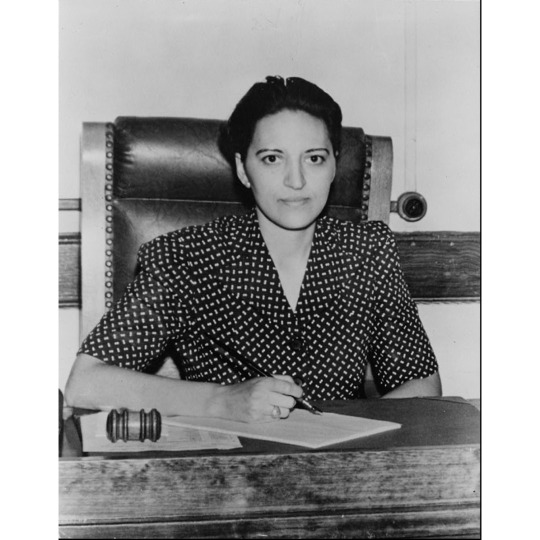
Fun fact: as a judge, Bolin didn’t wear judicial robes because she wanted to make children feel comfortable in her court.
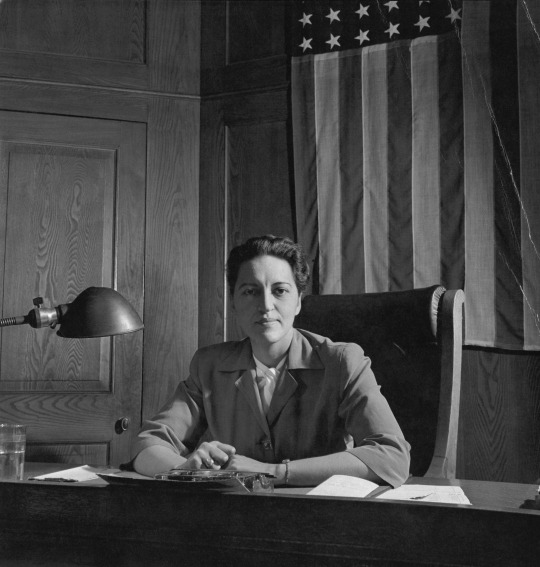
During her tenure, Bolin fought against racial discrimination in the courts and advocated for children, especially children of color. She required that probation officers were assigned to cases regardless of race or religion and required that publicly funded childcare agencies accept children regardless of ethnicity.

Bolin reluctantly retired at the age of 70 in 1979. After retiring, she worked as a consultant and school-based volunteer and served on the board of the NAACP, the National Urban League, and the Child Welfare League. She died in 2007 at the age of 98 in Queens, NY.

I’ll be back tomorrow with another illustration and story!
#jane bolin#black history month#black history facts#black history matters#illustrators on tumblr#artists on tumblr
21 notes
·
View notes
Text
for some reason, the columbus day question is in a lot of recent media from italian-american college profs and now i've been exposed to the worst take on the matter: change it to fiorello laguardia day
#'why do we pick the earliest cultural figure possible?' it's simple: it provides a schelling point which allows each group to claim victory#without turning the actual selection into an intra-factional squabble
2 notes
·
View notes
Text
Y/n Cole Biography
Y/N Cole
04.16.1992 Boston, Massachusetts
Major Movie roles/appearances:
The house bunny (2008) as Harmony
The Great Gatsby (2013) as Daisy Buchanan
Divergent (2014) as Tris Prior
Edge of Tomorrow (2014) as Rita Vrataski
Insurgent (2015) as Tris Prior
Joy (2015) as Joy Mangano (Nominated for Best Actress at the Academy Awards)
How to be single as Alice (2016) Also Executive Producer
Allegiant (2016) as Tris Prior
Murder on the Orient Express (2017) as Mary Debenham
Battle of the sexes (2017) as Gladys Heldman
Lady Bird (2017) as Christine "Lady Bird" McPherson (Nominated for Best Actress at the Academy Awards)
Red sparrow (2018) as Dominika Egorova
Tattoos:

Best Friends:
• Florence Pugh, parents met through work and become best friends around high school years
• Timothée Chalamet, went to the same high school. Y/N's Mom and his dad were classmates in school way back, so they friends since Timothée was born.
• Chris Evans, the Coles and the Evans' are great family friends. Lisa(Chris' mom) and Jane(Y/N's mom) have been best friends since teenage years. Chris and Y/N's sister Léa were born in the same year and the families are great friends. Chris is like a brother figure to Y/N.
• Emma Stone, met on the set of The house bunny. They clicked right away, best friends ever since.
• Jennifer Lawrence, met through Emma, the three of them got drunk together at an event and they are the iconic three. (Sooooo lame)
Public relationships:
• Kristen Stewart, June 2017 - September 2017
• Joe Jonas, March 2013 - February 2017
Family background:
Y/N grew up with her parents and older sister in Boston. Then when she was 11, her parents got divorced and Y/n and her dad moved to New York, where Y/N went to Fiorello H. LaGuardia High School. After high school, Y/n went to Columbia University, attending the Film MFA program. Her parents got back together and re-married in her first year of university, although she's been living in New York ever since, but moved to The Hamptons by now. Both of her parents are lawyers. The family traveled a lot while she was a child.
• Y/N's mom is going to be referred as Jane Cole / Mrs. Cole / Mom (1963)
• Y/N's dad is going to be referred as Matthew Cole / Mr. Cole / Dad (1961)
• Y/N's sister is going to be referred as Léa Cole(1985)
Acting career:
Y/N started as a child actor. She had her first movie when she was 13, The Adventures of Sharkboy and Lavagirl as Lavagirl. Ever since then she's been an actor. Had her Executive Producer debut in 2016 with How to be single. Her latest projects is Lady Bird.
27 notes
·
View notes
Text
3 notes
·
View notes
Text

Mayor LaGuardia throws out the first ball at Yankee Stadium, April 22, 1943. The visiting team was the Washington Senators. This officially opened the Yankees' 1943 season.
Photo: John Rooney for the AP via Newsday
#vintage New York#1940s#John Rooney#vintage baseball#NY Yankees#Yankee Stadium#Fiorello LaGuardia#April 22#22 April#first pitch
36 notes
·
View notes
Text

Troy Stix (Frances Troy Stix) was a dress designer who worked for Herbert Sondheim's apparel company from the 1940s through the 1960s. Herbert was legendary Broadway musical composer Stephen Sondheim's father. The above dress Troy designed for Sondheim was featured in an issue of Vogue magazine in 1945.
Before joining Sondheim's firm, Troy was working for department store Lord & Taylor. One of the dresses she designed for them was featured in Life Magazine in their September 1940 story about New York Fashion Week that year; Fashion Week was attended by then mayor Fiorello LaGuardia (who also rests at Woodlawn:)

She married lawyer John E. Connelly Jr. Their duplex apartment on Manhattan’s East Side was featured in House & Garden magazine's February 1956 issue; Troy's photo from that article is below as well as a photo of her bathroom, with monogrammed towels, and linen tablecloths as wallpaper!


Troy died in 1972 at age 66; she is entombed in Woodlawn.

5 notes
·
View notes
Note
It seems like LaGuardia's reputation is built on the fact that he was the first mayor of NYC who had access to a patronage network (federal New Deal money) that could compete with Tammany, not to mention the benefit of a ton of essentially free money and a relatively blank public works canvas with which to work. Which isn't to say he didn't do a great job, but without the New Deal I don't think he has the same ability to break Tammany's grip.
I wouldn't say that it's the only reason - plenty of other mayors at the time had access to New Deal patronage, but didn't have the same chops when it came to political coalition-building, policy design, lobbying, and administration, so didn't accomplish nearly as much as he did.
However, I would agree that the New Deal was absolutely essential to LaGuardia's long-term success. There had been plenty of reform mayors before LaGuardia, and I think he would have been the best of them even without the New Deal, but reform mayors tended to run aground when they prioritized government economy (i.e, austerity) while Tammany was able to offer handouts. The New Deal allowed LaGuardia to offer New Yorkers material benefits with one hand and government reform with the other, which was a better offer than they could get with Tammany.
#history#u.s history#nyc history#tammany hall#new deal#fiorello laguardia#nyc mayor#political machines#urban politics#urban history
11 notes
·
View notes
Text
Happy Birthday 🎂 🥳 🎉 🎈 🎁 🎊 To A Very Talented & Distinguished Actor Of Epic Blockbusters, Scifi, Biographical Dramas, Independent & Riverting Time Period Films Of History & etc
He is an American actor. He received widespread recognition and acclaim after starring as Władysław Szpilman in Roman Polanski's The Pianist (2002), for which he won the Academy Award for Best Actor at age 29, becoming the youngest actor to win in that category. He is the second male American actor after Christopher Lambert to receive the César Award for Best Actor.
Other successful films that He has starred in are The Thin Red Line (1998), The Village (2004), King Kong (2005), Predators (2010) and Midnight in Paris (2011). He is a frequent collaborator of Wes Anderson's, having starred in four of Anderson's films, The Darjeeling Limited (2007), Splice (2009), Fantastic Mr. Fox (2009), The Grand Budapest Hotel (2014), and The French Dispatch (2021). In 2017, he portrayed Luca Changretta in the fourth season of the BBC series Peaky Blinders. In 2022, he portrayed Arthur Miller in the Marilyn Monroe biopic Blonde and also starred as Pat Riley in the first season of the HBO sports drama series Winning Time: The Rise of the Lakers Dynasty.
Born On April 13th, 1973
He was born in Woodhaven, Queens, New York City, the son of Sylvia Plachy, a photographer, and Elliot Brody, a retired history professor and painter. His Father is of Polish Jewish descent; His mother, who was raised Catholic, was born in Budapest, Hungary, and is the daughter of a Catholic Hungarian aristocrat father and a Czech Jewish mother, although He says he was raised "without a strong connection" to either Judaism or Christianity.
As a child, He performed magic shows at children's birthday parties as "The Amazing Adrien". He attended I.S. 145 Joseph Pulitzer Middle School and New York's Fiorello H. LaGuardia High School of Music & Art and Performing Arts. His parents enrolled him in acting classes to distance him from the dangerous children with whom he associated. He attended summer camp at Long Lake Camp for the Arts in the Adirondacks in upstate New York. He attended Stony Brook University before transferring to Queens College for a semester.
He received widespread recognition when he was cast as the lead in Roman Polanski's The Pianist (2002). To prepare for the role, He withdrew for months, gave up his apartment and his car, broke up with his then-girlfriend, learned how to play Chopin on the piano; at 6 ft 1 in (1.85 m) tall, he lost 30 pounds (14 kg), dropping him to 130 lb (59 kg). The role won him an Academy Award for Best Actor, making him, at age twenty nine, the youngest actor ever to win the award, and, to date, the only winner under the age of thirty. He also won a César Award for his performance.
Please Wish This Outstanding Actor Of Incredible Acting Of Creative Roles In Movies A Very Happy Birthday 🎂 🥳 🎉 🎈 🎁 🎊
You Know Him
& You Have To Love Him
The 1
& The Only
MR. ADRIEN NICHOLAS BRODY
HAPPY 50TH BIRTHDAY 🎂 🥳 🎉 🎈 🎁 🎊 TO YOU MR. BRODY & HERE'S TO MANY MORE YEARS TO COME.
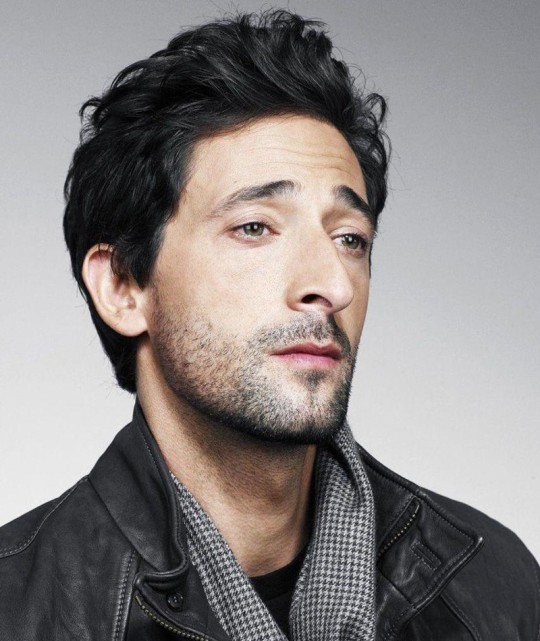

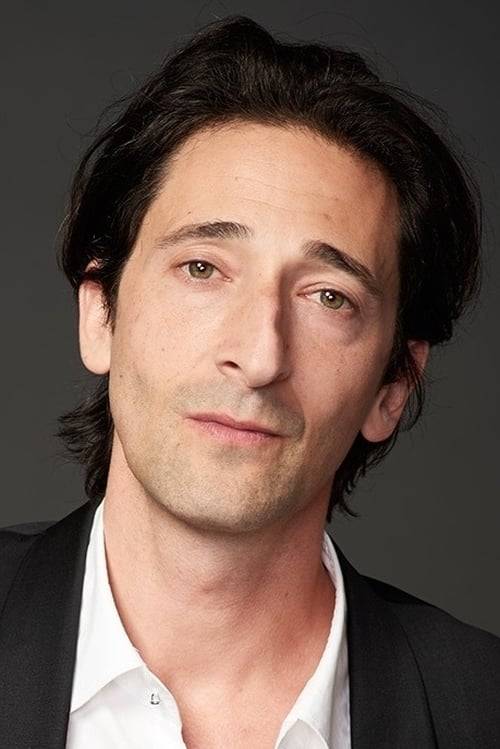
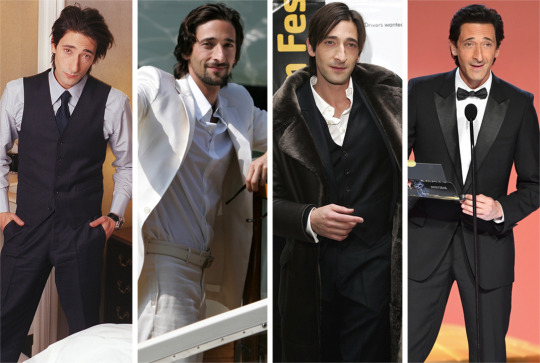

3 notes
·
View notes
Text
BACKGROUND
₍ ᶻᶻᶻ [NCTEBY] is typing ... ₎
❱ http:˚♡TOTHEWORLD여기는EBY!˚ˑؘ :: ·˚•org
loading...
10%
▓░░░░░░░░░
20%
▓▓░░░░░░░░
30%
▓▓▓░░░░░░░
40%
▓▓▓▓░░░░░░
50%
▓▓▓▓▓░░░░░
60%
▓▓▓▓▓▓░░░░
70%
▓▓▓▓▓▓▓░░░
80%
▓▓▓▓▓▓▓▓░░
90%
▓▓▓▓▓▓▓▓▓░
100%
▓▓▓▓▓▓▓▓▓▓
ᴅᴏ ʏᴏᴜ ᴡɪsʜ ᴛᴏ ᴇɴᴛᴇʀ ᴛʜɪs ғɪʟᴇ?
ʏᴇs [ √ ] ɴᴏ [ ]
ʟ ᴏ ᴀ ᴅ ᴇ ᴅ
꒰꒱ AN ALTERNATE NCT UNIVERSE ♡꙼̈࿐ ࿔
┍━━━━━━━━━━━━━━━━━━┑
┆
┆
┆
➦ ADESIDA AMALA EUSBIA ●
➦ NCT & SUPERM MEMBER ○
┆
┆
➦ P A S S W O R D : 04/09/2016
┆
➦ A C C E S S : C O N F I R M E D
┆
┆
┆
➦ C O N T I N U E ?
┆○ NO ● YES
┆
┕━━━━━━━━━━━━━━━━━━┙
─────────────────────
┊ ┊ ┊⋆。 ┊ ┊ ┊ ┊
┊ ⋆。 ┊ ┊ ┊ ┊⋆。┊ ༊*·˚
┊ ┊ ┊ ┊ ┊ ┊
┊ ‧₊ ༉ ┊ ˚✩ ┊ ๑՞.
┊ ₊˚.༄ ┊
✩₊̣̇. ੈ♡˳
✧.*ೃ༄ (TW// mentions of mental health problems, racial bullying, and transphobia) ━━━━━━━━━━━━━━━━━━━━━━━━
YOUNGER YEARS!
Eusbia-Amala Akunna Loyiso Adesida was born on January 1st, 1999, at the Montefiore Medical Center in the Bronx, New York City. Her mother is Gyeong-Hui Kim, a well-known supermodel of Korean descent credited with having one of the best supermodel walks on the runway ever up there with Naomi Campbell, Shalom Harlow, and Yasmin Ghauri, and her father is Akunna Adesida Jr, a music and theater teacher of Nigerian and South African descent. She is one of the youngest siblings in the family.
She was a child prodigy at a young age and started high school at eight years old after she tested out of her elementary school. She attended Fiorello H. LaGuardia High School of Music & Art and Performing Arts. She graduated in the year of 2012 as class president & valedictorian.
She was the youngest in her class. Going to this school jump-started her interest in becoming a singer-songwriter, producer, and composer. She used to sing in her church and school choir and take singing classes on the side. She even used to participate in school plays. Her parents also took the time to speak different languages around their children to learn and understand the people in their environment.
She also took up hobbies such as basketball, ballet, dancing, & gymnastics to distract herself from her parent’s divorce in 2008. She learned hip hop, modern, ballroom, and contemporary dance, all while going to school at the same time. She was the team captain of the school’s female basketball team.
While she was acting in shows and movies, after filming was over, she competed in competitions with people within her age range because she loved doing this to ground herself from fame.
She was friendly and kind to those around her. She taught herself a toxic habit of hiding her sorrows from her family and close friends around her. She had the privilege that most people didn’t, so she shut up and swallowed it down.
Her environment was while going to school; her mom was a model and jet-setting to different places for photoshoots, magazine covers, & fashion weeks. She had family stay with her and her siblings in the tiny apartment Gyeong-Hui brought herself to start her modeling career. Her dad was a music teacher, so he helped out at home while her mom was away. It causes her to develop severe depression & anxiety.
Lastly, as time passed, Akunna, Gyeong-Hui, and Himchan remarried different people a few years after their separate divorces, causing them to bring the family into a new and improved mansion near each other in Los Angeles. The parental figures decided to co-parent peacefully and became more involved with the children’s interests again, like before.
━━━━━━━━━━━━━━━━━━━ EBY━🌻
PRE DEBUT!
She got scouted by SM Entertainment in November 11th, 2012 at a dancing competition. The scout was interested when she saw Eusbia on the stage because of her fluid moves; she moved masculine yet feminine which intrigued her. She asked around to find Eusbia’s parents, and when the staff did, all hell broke loose because her parents were so angry and thought it was a scam. The worried parents had heard stories like this before and wanted to be careful.
Eusbia was intrigued but made sure to ask questions and get the information she wanted. After talking it out with her family, she flew to South Korea to become a trainee, she moved into her maternal grandparent's house, and that’s how the journey started. As a trainee, they made fun of her skin tone, hair, body, and facial features causing fellow trainees to spread rumors about how she was secretly a boy because of how “annoyingly flat-chested” she was in the eyes of most female trainees and they spread rumors she had a penis (when that wasn’t even true Eusbia just wore sports bras that didn’t accentuate her boobs and she didn’t have one) all because she had the talent they wanted. The company let her train in a separate room away from others. She still defended herself with her words and actions which the company did sparingly.
On a day before she debuted it was announced she was a new member along with her group members Suvi and Ines than they debuted a day later on February 8rd, 2013 with “Up & Down”. The reactions online from most K-Netizens were about her being too dark, too fat, and her hair should be straight to debut, which brought back her undiagnosed severe depression & anxiety again. She was a popular member internationally and had a cult following in South Korea.
━━━━━━━━━━━━━━━━━━━ EBY━🌻
DEBUT!
She dealt with a lot of hate but knew how to deal with it because she’s been in the Western entertainment industry for a decade, so she’s got it figured out. Within three years and one month of the group’s debut, they got the idea to add the eight-member group to the concept of NCT. With that idea in mind, she debuted again on April 9th, 2016, with the song ‘The 7th Sense’ under the name NCT U. She dealt with even more backlash than before. The exact words said to her by her fellow trainees were being said about her online, which is public to see.
Three months later, on July 6th, 2016, she debuted in the group NCT 127 with the song ‘Firetruck.’ A month later, she debuted under NCT VOXARA (the new group name) on August 8th, 2016, with “BOOMBAYAH” and “WHISTLE,” Then she debuted again sixteen to seventeen days later as a member of the younger subunit NCT DREAM with ‘Chewing Gum’ on August 24-25th, 2016. She was dealing with hate again from all fandoms, but it became harsher as she continued to promote in the two NCT male-dominated subunits. It became even more brutal when they realized she dorms with the members during promotions.
Ten years later, she debuted in SUPERM with the song ‘Jopping’ as the first female member along with Ines. The hate slightly died down as time went on but it still persists within solo stans.
━━━━━━━━━━━━━━━━━━━ EBY━🌻
SOLO DEBUT!
Six years before she debuted as a member of NCT VOXARA, nine years before she debuted as an NCT member, and thirteen years before she debuted as a SUPERM member. She had her first three singles out when she was 11-12, called ‘Whip My Hair’ on October 26th, 2010, ‘21st Century Girl’ on March 11th, 2011, and ‘Fireball feat. Nicki Minaj’ on October 6th, 2011.
Her first album ‘Unbreakable Smile,’ released on June 23rd, 2015. Second album ‘Sit Still, Look Pretty,’ released on October 7th, 2016. Third album ‘Ctrl’ released on June 9th, 2017. Fourth album ‘Amala’ released on March 30th, 2018. Fifth album ‘Eusbia’ released on October 12th, 2018. Sixth album is ‘Hot Pink’ released on November 7th, 2019. Seventh album is ‘It was Divine’ released on April 4th, 2020. Her eighth album ‘Positions’ released on October 30th, 2020. Her ninth album ‘Planet Her’ was released on June 25th, 2021. Her tenth album called ‘Heart on my Sleeve, SOS’ was released on December 9th, 2022.
All of this brought the hate and backlash down but only to a small percentage. She is currently breaking records in the music world internationally and in South Korea.
━━━━━━━━━━━━━━━━━━━ EBY━🌻
PRESENT DAY!
At twenty-three to twenty-four years old, she became one of the world’s youngest self-made billionaire with the business she launched at eighteen. She is currently developing positive habits to follow instead of the former toxic patterns she did to herself. She is taking Lexapro, prescribed by her psychiatrist, and will be weaned off by March 2023.
She works out four times a week, eats healthier foods, follows a strict skincare routine, is becoming comfortable talking about her feelings with her loved ones, and will start taking vitamins after she weans off her antidepressant medication. She has never once hated her skin tone and hair and is loving it even more than before.
━━━━━━━━━━━━━━━━━━━ EBY━🌻
Credits to @nct-mimi for the layout idea
2024 update: I’m planning on rewriting this to make it cohesive.
#illusion!ocnet#nct female member#nct u female member#nct 127 female member#nct dream female member#superm female member#nct female addition#nct u female addition#nct 127 female addition#nct dream female addition#superm female addition#nct 24th member#nct 127 10th member#nct dream 8th member#superm 8th member#eby.nct#eby.nctu#eby.nct127#eby.wayv#eby.superm#female member of nct#female member of nct u#female member of nct 127#female member of nct dream#female member of superm#eby.background
6 notes
·
View notes